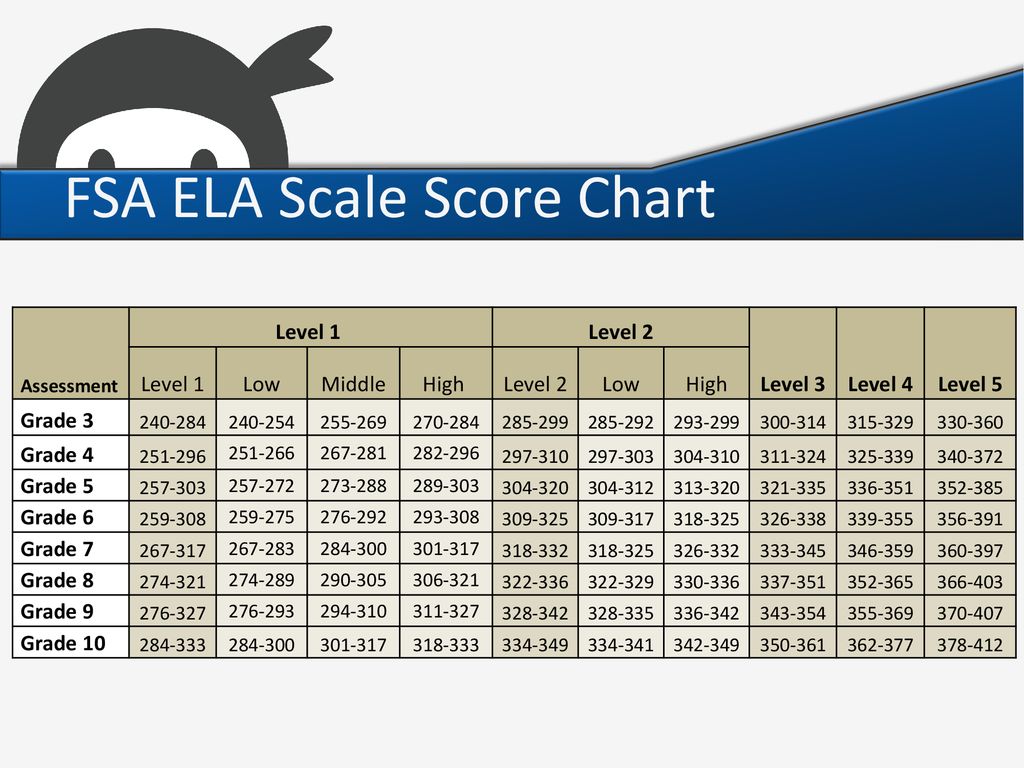
Superintendent's Teacher Leader Academy - ppt download
Price: $ 34.00
4.5(374)
Welcome! Welcome to the annual Superintendent’s Teacher Leadership Academy! We are so excited you are here! Thank you to our Sponsors for making this event possible!.
DATA. Superintendent’s Teacher Leader Academy. #STLA2019..
and Use Data to Improve. Teaching and Learning. Thoughts on Data…. We are all from different schools, but you all were chosen because you all are experts! The one thing that we do have in common is that we all collect, analyze, communicate and use data to improve instruction in our classroom. This three day workshop will only improve your already ninja-like skills! Let’s chat about it! From ANY DEVICE, visit: Nearpod.com. And use code: MGJBV..
Nearpod.com - Enter Code MGJBV.
You are here because your principal identified you at your school site as being the best at what you do and you care about the future of our students. Now that we’ve established that you are among the best, there is no need to prove it over the next few days – we are going to ask that you hang up your superhero capes while we are together. Together, we are a group of committed, thoughtful teachers- working together on a common goal: To become data literate. Data Literacy..
Data itself invokes a feeling in everyone. Before we get too far into this, let’s discuss those openly in order to establish a group commitment to addressing them. Answer the following questions on the note cards provided: Fears: If this is the worst experience you’ve had, what will have happened or not happened Hopes: If this is among the best professional development you’ve attended, what will be the outcome(s).
Change begins with new questions that ignite curiosity and a new conversation. We all have questions about why things are done a certain way and occasionally we’ll express them. In order to invoke change, we have to be comfortable with asking the deeper questions. Sometimes we notice that we hit a nerve, or maybe we peak an interest: however, sometimes those questions just fall to the ground or get negative reactions. How do we overcome this Norm Setting..
We don’t need to seek permission to be a catalyst for change. It is our willingness to ask the deeper, harder questions that will set us apart. It is also the willingness of others to hear and embrace those questions that lead to our adventure. What questions are you searching for answers to within your own practice Don’t be surprised if they lead you to new, refreshing, (and sometimes intimidating) conversations. But know this: Great questions can lead to transformational actions. Norm setting is a way create a team that has a framework in place for dealing with even the most difficult question. This can be done with your department or grade level teams before taking on data discussions..
Dialogue about the following questions. Do not write your answers until the team has reached some level of agreement. Once you have agreed on your answers, commit them to the flip chart through a list of Norms . (Not all questions need to be answered.) -What does this team want to stand for -How will we create a safe place to bring our questions -How will we handle disagreement -What would this team look like at their best -What are some opportunities or challenges our school faces that we don’t need permission to do something positive about -What does a trust-based data group look like.
We will not make assumptions. We will ask for clarification. We will not talk behind each other’s backs. We are a team. We want to be respected, so we will demonstrate respect to each member of this team. There is no such thing as failure- there are only results and room to improve. Students are at the center of every decision. Jessica’s: Our commitment is to help every student succeed. All of our actions and words will be focused on this commitment. We will rephrase negative statements using positive language. Shane’s: We value trust and will act with trustworthiness. We will not use the data that we are privy to outside of its intended use. This means we will not gossip about data or people..
Giselle Marsh. Director School Improvement and Accountability. Leon County Schools..
A school’s grade is determined by: Summing the points earned for each component (each component is worth 100 points) and dividing by the sum of total points available for all components with sufficient data. The percentage resulting is the percentage of points the school earned from all applicable components. This percentage is compared to the scale set by the State Board of Education to determine a school’s grade..
The State Board of Education sets the scale and must, per state law, periodically review the scale to determine whether the expectations should be raised to encourage increased student achievement. If the Board adjusts the grading scale upward, it must inform the public and the school districts of the reasons for the adjustment and the anticipated impact on school grades. Grade. Scale. A. 62% of total points or higher. B. 54% to 61% of total points. C. 41% to 53% of total points. D. 32% to 40% of total points. F. 31% of total points or less..
School Grades Model. 11 Possible Components. English. Language Arts. Achievement. (0% to 100%) Learning Gains. Learning Gains of the. Low 25% Mathematics. Achievement. (0% to 100%) Learning Gains. Learning Gains of the. Low 25% Science. Achievement. (0% to 100%) Social Studies. Achievement. (0% to 100%) Middle School Acceleration. Middle School. (EOCs or industry certifications) (0% to 100%) Graduation Rate. Overall, 4-year Graduation Rate. (0% to 100%) College and Career Acceleration. High School. (AP, IB, AICE, dual enrollment or industry certification) (0% to 100%).
A maximum of 7 components. The school grade is based on the percentage of total points earned, and schools are graded based only on the components for which they have sufficient data. English. Language Arts. Achievement. (0% to 100%) Learning Gains. Learning Gains of the. Low 25% Mathematics. Achievement. (0% to 100%) Learning Gains. Learning Gains of the. Low 25% Science. Achievement. (0% to 100%).
A maximum of 9 components. The school grade is based on the percentage of total points earned, and schools are graded based only on the components for which they have sufficient data. English. Language Arts. Achievement. (0% to 100%) Learning Gains. Learning Gains of the. Low 25% Mathematics. Achievement. (0% to 100%) Learning Gains. Learning Gains of the. Low 25% Science. Achievement. (0% to 100%) Social Studies. Achievement. (0% to 100%) Middle School Acceleration. Middle School. (EOC or industry certification) (0% to 100%).
A maximum of 10 components. The school grade is based on the percentage of total points earned, and schools are graded based only on the components for which they have sufficient data. English. Language Arts. Achievement. (0% to 100%) Learning Gains. Learning Gains of the. Low 25% Mathematics. Achievement. (0% to 100%) Learning Gains. Learning Gains of the. Low 25% Science. Achievement. (0% to 100%) Social Studies. Achievement. (0% to 100%) Graduation Rate. Overall, 4-year Graduation Rate. (0% to 100%) College and Career Acceleration. High School. (AP, IB, AICE, dual enrollment or industry certification) (0% to 100%).
A maximum of 11 components. The grade is based on the percentage of total points earned, and combination schools are graded based only on the components for which they have sufficient data. English. Language Arts. Achievement. (0% to 100%) Learning Gains. Learning Gains of the. Low 25% Mathematics. Achievement. (0% to 100%) Learning Gains. Learning Gains of the. Low 25% Science. Achievement. (0% to 100%) Social Studies. Achievement. (0% to 100%) Middle School Acceleration. Middle School. (EOC or industry certification) (0% to 100%) Graduation Rate. Overall, 4-year Graduation Rate. (0% to 100%) College and Career Acceleration. High School. (AP, IB, AICE, dual enrollment or industry certification) (0% to 100%).
The Percentage of Full-Year Enrolled Students who scored at Level 3 or above in: English Language Arts. Florida Standards Assessment in English Language Arts - Grade 3 to 10. Mathematics* Florida Standards Assessment in Mathematics - Grades 3 to 8. Algebra 1 EOC. Geometry EOC. Science* Science - Grades 5 and 8. Biology 1 EOC. Social Studies* Civics. U.S. History. *For EOCs, a student must be enrolled in the course to be counted in achievement..
Assessment. Level 1 Level 2. Level 3. Level 4. Level 5. Level 1. Low. Middle. High High. Grade Grade Grade Grade Grade Grade Grade Grade.
Assessment. Level 1 Level 2. Level 3. Level 4. Level 5. Level 1. Low. Middle. High High. Grade Grade Grade Grade Grade Grade End-of-Course Assessments. Assessment. Level 1 Level 2. Level 3. Level 4. Level 5. Level 1. Low. Middle. High High. Algebra Geometry Algebra.
In January 2018, the State Board of Education approved the inclusion of FSAA results in school grades beginning with the school year. Achievement - Level 3 or higher..
High High. Grade Grade Grade 5. Grade 6. Grade 7. Grade Grade Grade.
Low. Middle. High High. Grade Grade Grade 5. Grade 6. Grade Grade Access Algebra 1 EOC Access Geometry EOC.
Improve one or more achievement levels from one year to the next (e.g., move from Level 1 to Level 2; Level 2 to Level 4, etc.) Maintain a Level 3 or Level 4 and the student’s scale score must have improved from one year to the next. For students who remain in Level 1 or Level 2, split Levels 1 and 2 into multiple sections (Level 1 into thirds and Level 2 in half) and require the student to improve from section to section within the Level (e.g., move from the bottom third of Level 1 to the middle third of Level 1) Maintain a Level 5 from one year to the next..
Students who take a FSA EOC assessment and remain at an achievement Level 3 or Level 4. Maintain a Level 5 from one year to the next..
Improve one or more achievement levels from one year to the next (e.g., move from Level 1 to Level 2, Level 2 to Level 4). Split Levels 1 and 2 into multiple sections (Level 1 into thirds and Level 2 in half), and require the student to improve from section to section within the Level (e.g., move from the bottom third of Level 1 to the middle third of Level 1). Split Level 3 into two sections, and require the student to maintain the same section or improve from section to section within the Level. (e.g., move from the bottom half of Level 3 to the top half of Level 3). Maintain a Level 4..
Calculated for both English Language Arts and Mathematics. Applies the same learning gains methodology to the lowest performing 25% of students. Determining the lowest performing 25% of students. Uses the performance of students in the prior year calculated at each grade level to identify the lowest performing 25% of students (EOCs not by grade level) Low 25% is not limited to students in Achievement Levels 1 and 2..
Bottom 25% Rank Calculation.
The percentage of eligible students who passed one or more high school level statewide, standardized end-of-course (EOC) assessments or attained industry certifications identified in the industry certification funding list. Calculated for all schools that include grades 6, 7, and 8 or grades 7 and 8. Eligible students include full-year-enrolled students, who are current-year grade 8 students who scored at or above Achievement Level 3 on the Mathematics statewide assessments in the prior year, or are full-year-enrolled students in grades 6, 7, or 8 that took high school level EOC assessments or industry certifications. Industry certification data is the most recent available and lags by one year. Students must be enrolled in the course to be included. A student is included in the calculation no more than once..
Calculated for all schools that include grades 9 to 12, grades 10 to 12, and grades 11 and 12. Also calculated for combination schools that include these grade levels..
Cohort-based calculation using the graduates from the graduation rate calculation as the denominator. The percentage of graduates who, while in high school, earned college credit through AP, IB, or AICE examinations; earned a C- or better in an eligible dual enrollment course; or. earned a CAPE industry certification..
Calculated for each assessment and then aggregated. Schools that do not test 95% of students will receive grades of I.
English. Language Arts. Achievement. 41% Learning Gains. 60% Learning Gains of the. Low 25% 53% Mathematics. Achievement. 40% Learning Gains. 55% Learning Gains of the. Low 25% 53% Science. Achievement. 36% Social Studies. Achievement. 53% Middle School Acceleration. Middle School. (EOC or industry certification) 64% Graduation Rate. Overall, 4-year Graduation Rate. 74% College and Career Acceleration. High School. (AP, IB, AICE, dual enrollment or industry certification) 38% Total Points Earned. Total Components. Percent of Total Possible Points. Grade % C..
A mock data book and a blank middle school grade calculation sheet has been provided. Using the data book, to calculate the numbers for only the green sections in your middle school grade calculation sheet. Once you have filled in all the green sections of your sheet, use your numerical predictions to calculate the percentage of total possible points in the pink section. Please Note: These numbers are not factual and they do not represent a specific school site. The data is only hypothetical for this specific data activity..
A gain cannot be made from a prior year FSAA to current year FSA, or a prior year FSA to current year FSAA..
FCAT 2.0, and EOCs – did not include the FAA Statutory change to required that all statewide assessments be included in the low 25% calculation (3) provides that statewide assessments include. Comprehensive assessments in ELA, Math and Science. End-of-Course assessments. Florida Alternate Assessments. Simulations have shown very little impact from the inclusion of alternate assessments..
Identify the problem that you see with this data (what needs to be improved). In your professional opinion, begin exploring hunches and hypotheses about why this problem exists..
What further questions do you have and what data do you need to answer those questions.
Subgroup Data: Maintaining a focus on students who need the most support. Student Subgroups: Demographics. Economically Disadvantaged. Bottom 25% (35%) Students with Disabilities. English Language Learners..
Subgroup Data: Maintaining a focus on students who need the most support. Resources: (School Report Card – Beta) (School, District and Statewide Data) We will use both of these sites to prepare our Data Chart for Day 2..
DATA. Superintendent’s Teacher Leader Academy. Welcome to Day 2! #STLA2019..
Learned what Data Literacy was. Released our Fears and Verbalized our Hopes. Set norms for working with our groups. Discussed data confidentiality and use of positive language when discussing teachers and students. Learned how to calculate school grades! Discussed subgroups and the importance of subgroups. Learned how to look at data and explore hunches and hypothesis and determine what further data may be needed when beginning to dig into data..
In your groups using what you learned yesterday, work to calculate your school grade. This process helps us to see where we are losing our points! What cells are you losing your points in Proficiency. Learning Gains. Bottom 25% EOCs (Secondary Only) Acceleration (Secondary Only) *lagged data. Graduation Rate (H/S Only)* lagged data..
Student Point Value DJ Wright Academic Services Leon County Schools.
SECONDARY STUDENT POINT VALUE.
ELEMENTARY STUDENT POINT VALUE.
The Formula 100 Point value for each student = # of students.
*Using the point value data, what are the implications for administrative decisions *What are the implications for classroom instruction How would you plan for students using this data *How will you know if your plan is working What if it is not *How could the point value data by used to allocate resources.
DATA. Superintendent’s Teacher Leader Academy. Welcome to Day 3! #STLA2019..
Calculated our school grades for Discussed Proficiency, Learning Gains, Bottom 25%, EOCs, Acceleration, and Graduation Rate. Brainstormed reasons why we may be losing points in the identified sections. Looked at how much certain students count – when they fall into multiple boxes..
Today, we will break out into Elementary and Secondary groups and discuss ways to improve data from the classroom level. We will take a look at the following: Instructional Strategies. Using Data to Drive Instruction. Relationship Building..
Curriculum Developers Professional Learning.
Lead yourself exceptionally well. Be willing to do what others won’t. Be positive! Invest in relationships – this matters! Be prepared every time you take your leaders time. Know when to push and when to back off. Become a go-to player. Be better tomorrow than you are today.
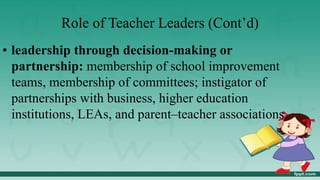
Teacher leadership presentation

Teacher Leader Presentation 1, PDF, Leadership

School Principal's Day Google Slides and PowerPoint

Call for Learning Cluster Proposals for 2024 USA-Kansas Uniting Leaders Conference

School Leadership in 12 slides. – teacherhead

Leadership Is a Disposition, Not a Position, NIET

Strategic Storytelling: A School Leader's Guide to Annual Strategic Planning

Live Feed El Segundo Unified School District
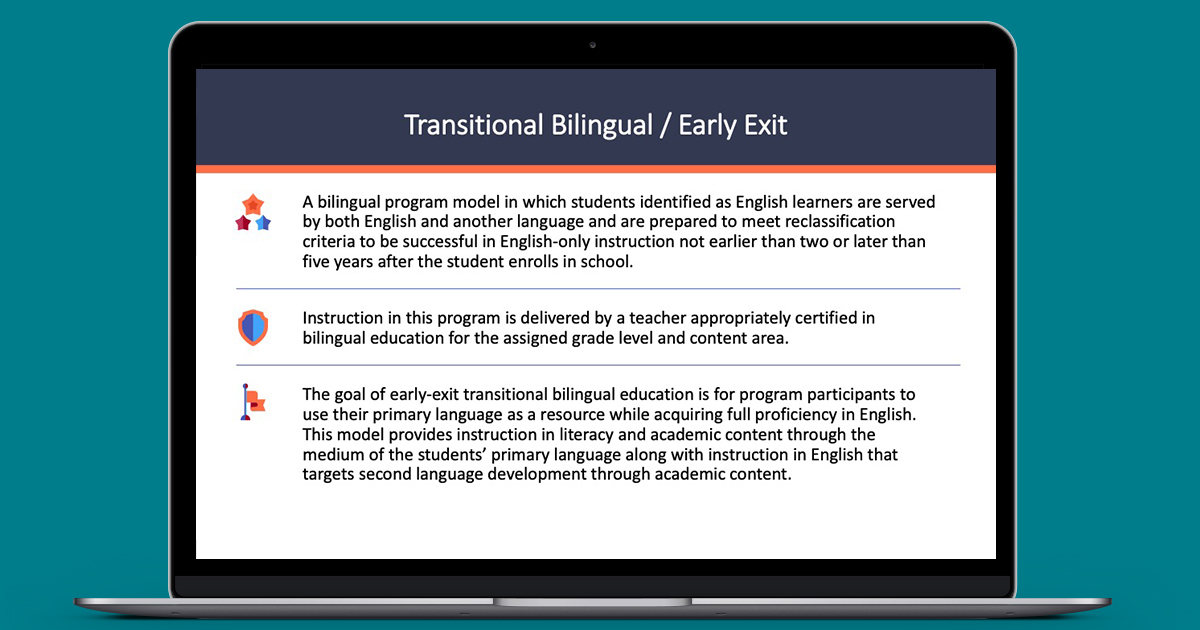
Bilingual/ESL School Board Report Presentation Template
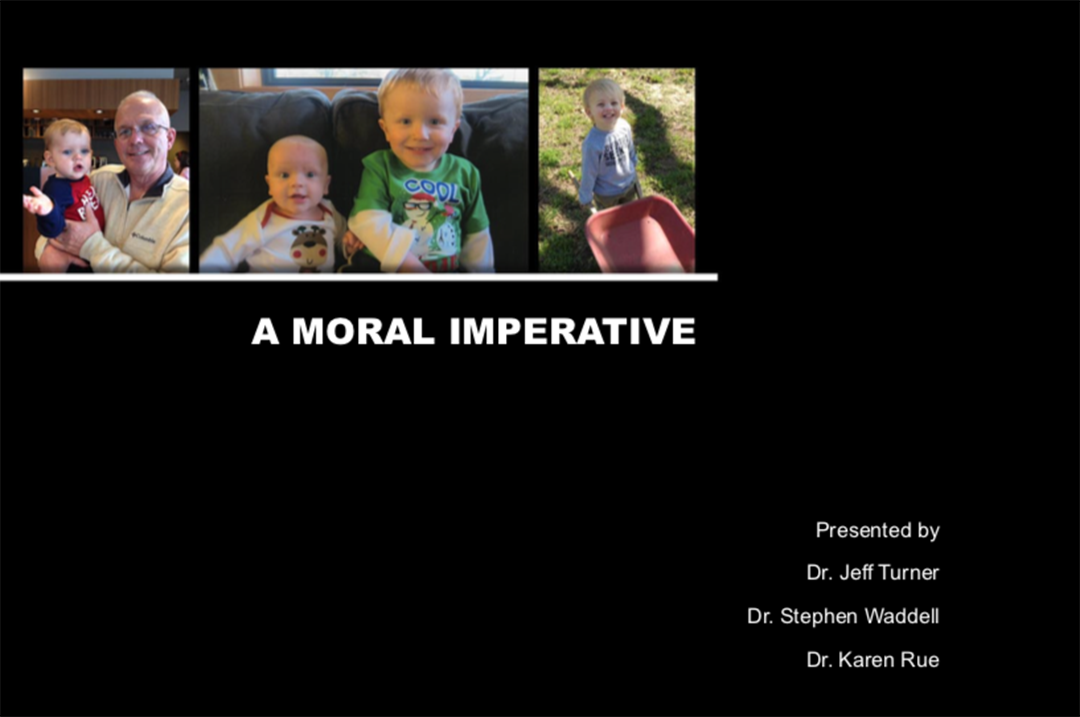
A Moral Imperative Report and Presentation
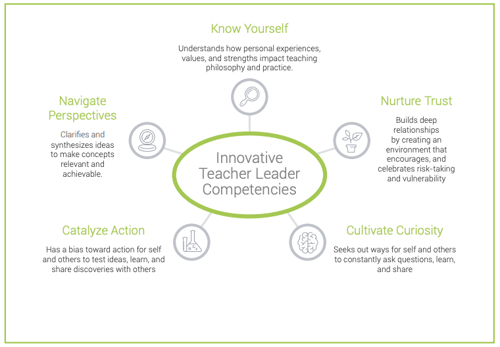
The Ultimate Education Leadership Development Guide - Education Elements
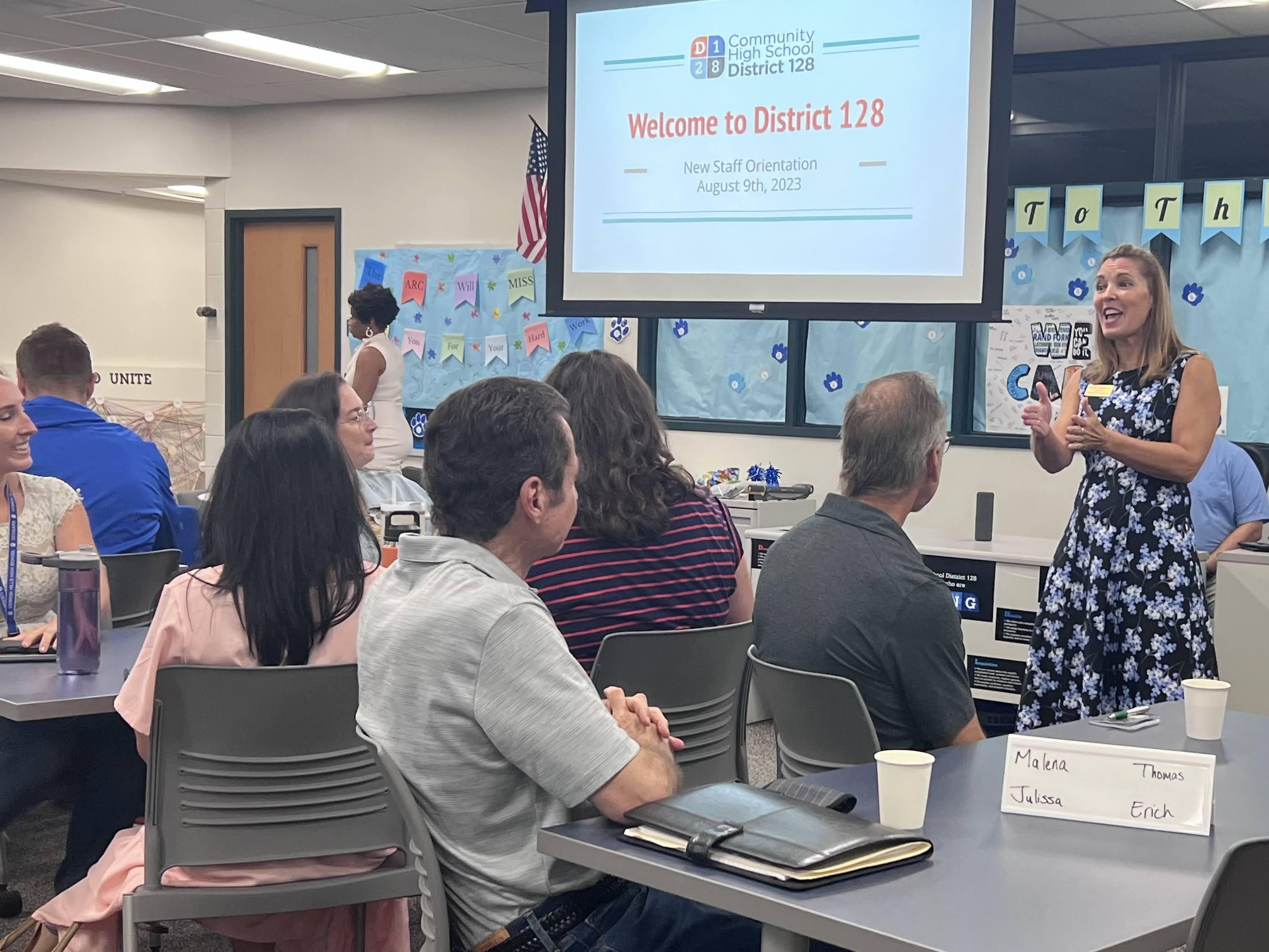
Superintendent, D128




